Modena is a city that captures the beauty of Italian culture, history, and architecture. While these are the monumental highlights to visit in Modena, the city has much more to offer. From exploring the local cuisine to enjoying the beauty of the surrounding countryside. Your trip to Modena is guaranteed to be an unforgettable experience. Whether you’re planning a short break or a longer stay, Modena is for sure worth a visit.

Table of Contents
Duomo di Modena
The origins of Duomo di Modena date back to the early 11th century when Modena was ruled by the wealthy and powerful Boniface III. He desired to leave behind a lasting legacy and so Boniface III commissioned the construction of a grand cathedral. The work began in 1099 and was carried on by his son Anselmo in 1106. It took over 200 years for the cathedral to be complete, but it was worth the wait. The cathedral features an impressive fusion of Romanesque and gothic styles, making it a unique specimen of medieval architecture.
One of the most significant features of the cathedral is its portico, which is a fine example of the Romanesque architectural style. The portico’s walls are adorned with intricate reliefs depicting biblical and historical scenes. The central and right-hand doorways, in particular, are renowned for their bronze depictions of biblical scenes, made by the celebrated sculptor Wiligelmo.
The Cathedral’s interior is equally impressive, featuring a vaulted nave, transept, chancel and ambulatory, all of which are decorated with frescoes dating back to the 13th century. Among these frescoes, the most noteworthy is the cycle of frescoes by Gianfranco Ferrara, illustrating the life of St. Geminianus, Modena’s patron saint. Visitors can also marvel at the stunning rose window, which is known for its delicate tracery and colourful stained glass.
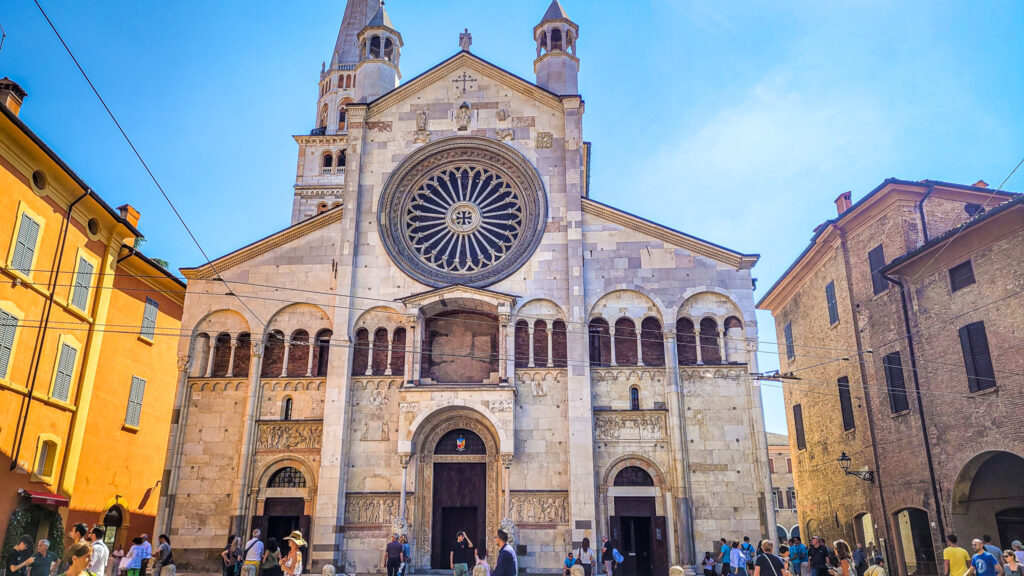
Bell tower & museum
The bell tower is 88 metres high and the most prominent feature of the cathedral. It is also the tallest bell tower in Italy that belongs to a Romanesque church. The tower is created with a series of carvings and sculptures, and visitors can enjoy panoramic views of Modena and the surrounding countryside from its summit.
The Cathedral Museum is worth a visit if you like history and art. The museum houses an extensive collection of art treasures, including illuminated manuscripts, jewellery, and sculptures. Notable items include the bust of St. Geminianus sculpted by Girolamo Donnino in 1529 and the Madonna and Child by Guido Mazzoni. The cathedral, the tower and Piazza Duoma are on the UNESCO World heritage list.

Piazza Duomo
Piazza Duomo has been around for more than a millennium and has seen immense changes throughout history. During the Roman Empire, the square served as a hub for commercial activities, and an enormous complex of trading shops was built in its confines. Later, during the Middle Ages, it played an essential role as a meeting point for the locals and was consequently revamped several times as per the different architects’ needs and desires. The architectural evolution of the square spans over centuries and speaks to the numerous artistic influences that have passed through Modena, leaving their mark on the city’s landscape.
The stunning architecture of the square is a mix of Romanesque and gothic art. Some of the most significant structures in the square are the cathedral, the Torre Ghirlandina, and the Piazza Municipio. Piazza Duomo also houses several museums. The most notable of these is the Museo del Duomo. This museum houses a rich collection of artworks, mainly from the Romanesque and gothic periods. The artworks include sculpture and religious artefacts, which are intricately designed and preserved to showcase the stunning artistry of the past. Visitors will learn much about the history and religious heritage of Modena by indulging in the museum’s artefacts.
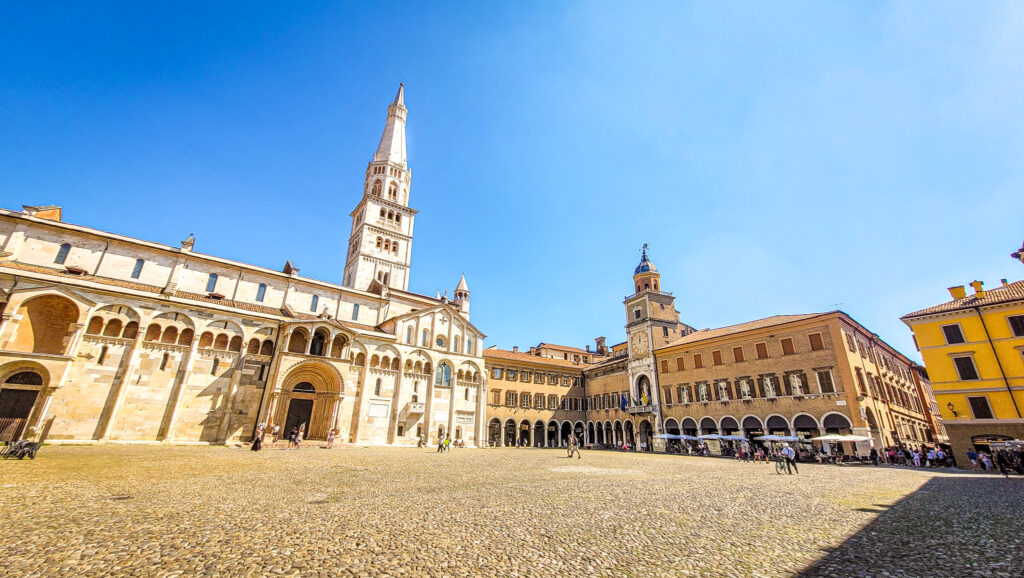
Enzo Ferrari Museum
The Enzo Ferrari Museum opened its doors to the public in 2012, and since then, it has become one of the most popular tourist attractions in Modena. The museum consists of two buildings, the Enzo Ferrari Museum and the Enzo Ferrari Museum Modena. The first is located in the city of Modena, while the second museum is located in the nearby town of Modena, Maranello
The Enzo Ferrari Museum houses a collection of cars and racing memorabilia, including vintage cars, Formula One cars, and a range of other cars from different periods in history. You can also find exhibits dedicated to Enzo Ferrari’s life, achievements, and the history of Ferrari. On the other hand, the Enzo Ferrari Museum Modena focuses on Enzo Ferrari’s personal life, architecture, and design.
One of the most striking features of the museum is its architectural design. The museum’s building was designed by Jan Kaplický, one of the most renowned architects of the 21st century. The building’s modern aesthetics and bold design are a testament to Ferrari’s legacy and vision. Visitors can take a guided tour of the building to get a better understanding of the museum’s design and architecture.
Apart from the museum’s permanent collections, the Enzo Ferrari Museum also hosts temporary exhibitions throughout the year. These exhibitions showcase works of art and design, and other artistic creations inspired by Enzo Ferrari and the world of Ferrari.
Palazzo Comunale
Another great monumental highlight to visit in Modena is Palazzo Comunale. The origins of Palazzo Comunale in Modena date back to medieval times, when the city was a bustling centre of commerce and trade. The first construction of the Palace dates back in 1141 under the guidance of the then Podestà Raniero. The building’s striking façade features alternating bands of white and pink marble, a typical feature of Romanesque architectural style. The Palace served not only as a seat of power but also as a symbol of civic pride and signified the city’s growing status in the region. The architects of the Palace incorporated religious and historical elements into the building’s design, including an impressive bas relief depicting the Three Wise Men and a statue of Boniface VIII, the Pope who first recognized Modena as a city.
Renaissance architecture
In the fifteenth century, Modena experienced a revival of arts and culture known as the renaissance. Palazzo Comunale was also expanded and beautified in a way that reflected the era’s ideals. The central courtyard, which features a picturesque colonnade, was added during this period, as well as the iconic medieval Clock Tower, Torre dell’ Orologio. The addition of the Clock Tower not only provided functional value to the building but has also become the city’s symbol as a place of tourism and culture. Other architectural features from this time period include the ornate frescoes, stucco work, and an impressive collection of historical artifacts and artworks.
Restorations
Over the course of centuries, Palazzo Comunale has faced challenges, including wars, fires, and structural damage. Throughout the modern era, the building underwent several restorations, but the architects have done a commendable job of preserving the structure’s historical and architectural essence. The restoration involved the use of innovative techniques and materials such as reinforced concrete and steel, which are intelligently hidden away so that the building’s original aesthetics could remain intact.
Culture
Palazzo Comunale is an essential cultural and historical destination for travellers and architecture enthusiasts. In addition to the fantastic architectural features, the Palace has a museum that features displays of the political and civic life of Modena, from the Roman era to the modern-day. During your visit, you will admire the magnificent rooms such as Salone del Guariento, in which the most important gatherings and meetings of the City Council were held. The frescoes, art collections, and historical artifacts give a glimpse into Modena’s rich cultural heritage.
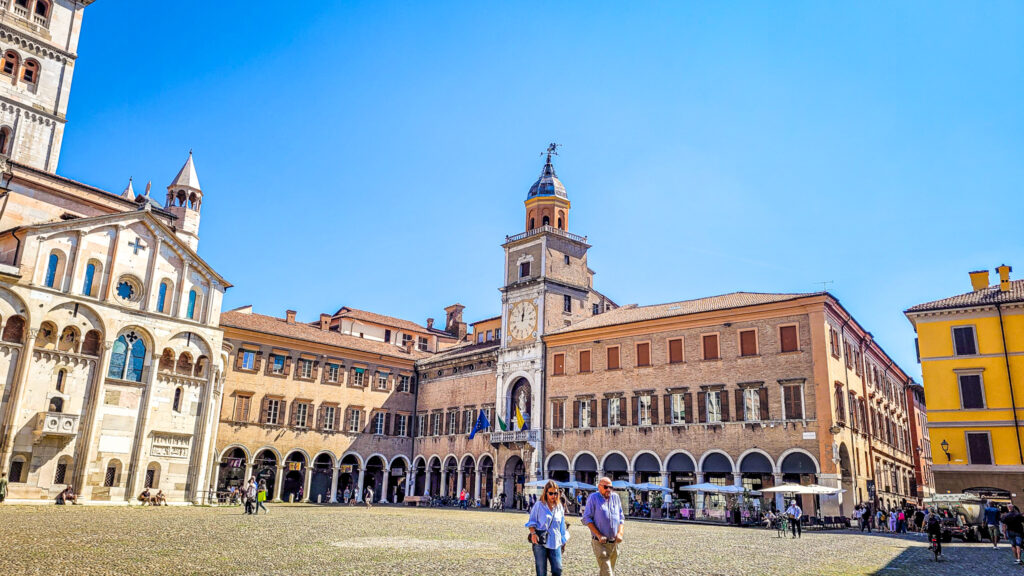
Taste Modena Balsamic Vinegar
Modena is renowned for its world-famous balsamic vinegar, which is made from local grapes and aged in oak barrels for several years. You can visit one of the local producers for a guided tour of the production process, followed by a tasting of this exquisite condiment. For itineraries and balsamic tasting tours go to Visit Modena for the latest updates.
Palazzo dei Musei
The history of Palazzo dei Musei in Modena dates back to the 18th century when it was built by Francesco Vandelli. The palace has been through various renovations over centuries to become what it is today. The building was originally designed to be a college for orphans and was later converted into a civic museum in 1861 to showcase the art collection of the Duke of Este. Palazzo dei Musei houses several museums, including the Civic Archaeological Museum, the Civic Museum of Ancient Art, the Este Gallery, and the Library.
Architecture
When it comes to architecture, Palazzo dei Musei is a visual feast for anyone who appreciates art. The building’s facade is an impressive example of Rococo style, with its elegant curves and elaborate decorations crafted by local artisans. The palace is also known for its beautiful inner courtyard, which is a fusion of different architectural styles, including baroque and neoclassical. The courtyards’ design is reminiscent of the Italian renaissance and features a fountain with sculptures and stuccoes of local heroes.
As you walk through the museum’s various halls and galleries, you will be amazed by the art collections from different eras. The Este gallery, for instance, is home to one of the most extensive collections of ancient art in Italy. The museum displays works of art from all over the world, including paintings, sculptures, and artefacts from ancient civilizations. You will also discover a vast collection of medieval and renaissance art, including some by famous Italian artists, such as Guido Reni, Bernini, and Correggio.
Palazzo dei Musei in Modena is not just a museum, but also a cultural hub for the city. Visitors can take part in various cultural activities, including workshops, seminars, and events, that take place regularly in the museum’s beautiful surroundings. The palace is also a popular venue for exhibitions and concerts.
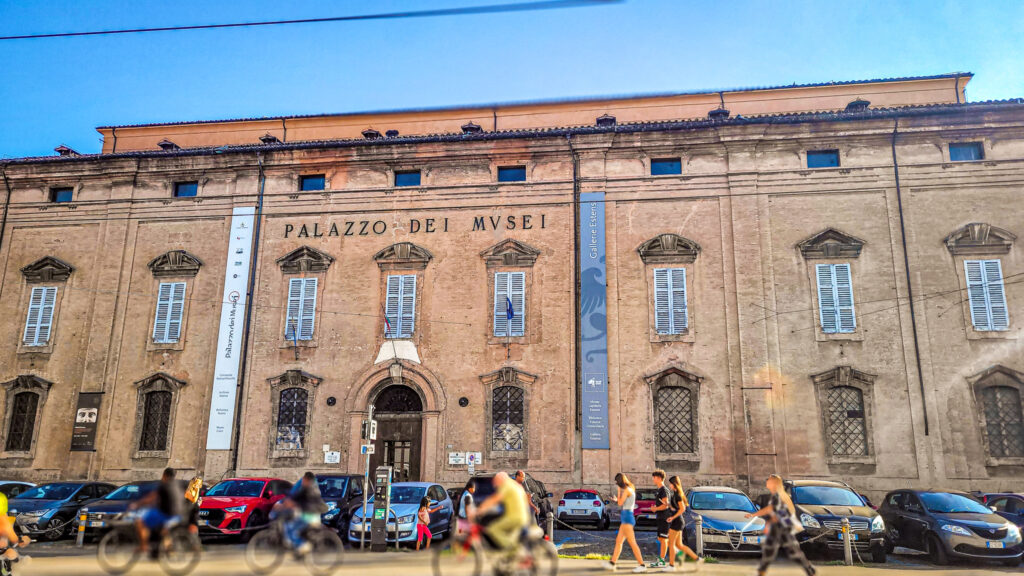
Parco Giardino Ducale Estense
The origins of the Parco Giardino Ducale Estense date back to 1634 when Francesco I of Este decided to build a beautiful country estate that would showcase his exquisite taste in art and architecture. The garden was meant to be an extension of his palaces and allow him to escape urban life. Designed by the famous landscapist, Giovanni Tommaso Francini and his assistant, Bernardino Facciotto, the garden boasted beautiful flower beds, lovely fountains, water features, and grottoes.
In the 18th century, Duke Francesco III d’Este, commissioned the construction of the splendid Palazzina dei Giardini. This unique building is an example of baroque architecture that perfectly blends with the natural environment, and it offers visitors a glimpse into the luxurious lifestyle of the Modenese aristocracy. The building is decorated with frescoes, stuccos, and paintings, and it hosts the Museum of Risorgimento and the Museum of the City of Modena, which features a rich collection of art from the 17th to the 19th centuries.
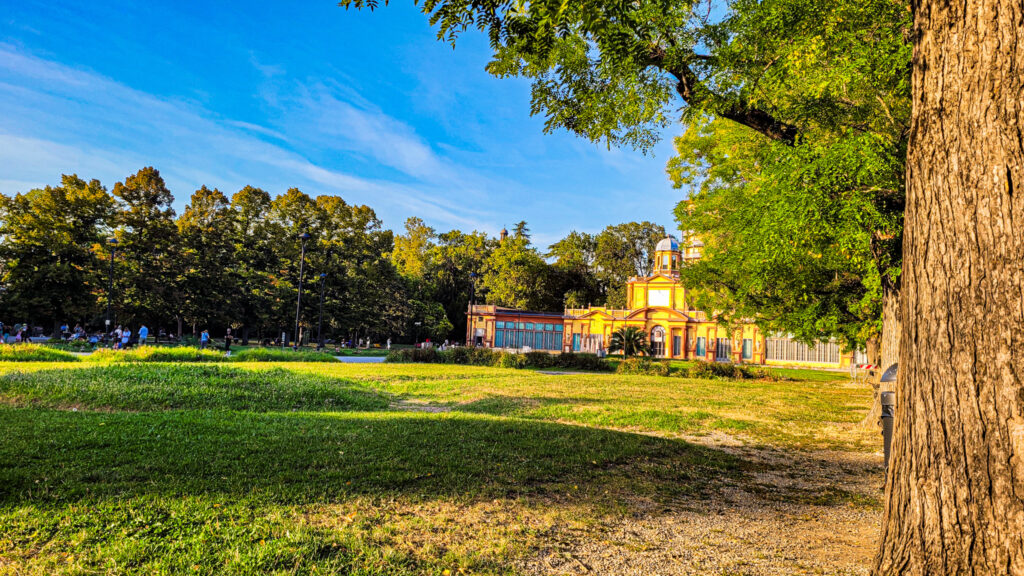
Palazzo Ducale di Modena
A short history of Palazzo Ducale di Modena
Palazzo Ducale di Modena was the official residence of the Este family, who ruled the Duchy of Modena and Reggio from the 14th to the 18th century. The original structure dates back to the medieval times but was subsequently expanded and modified over the centuries. During World War II, the palace was severely damaged and had to undergo extensive restoration in the 1950s.
The Architecture of Palazzo Ducale di Modena
The baroque architecture of Palazzo Ducale di Modena is a visual treat. The palace, which spans 34,000 square meters, is built around a central courtyard and has an impressive façade that is as strikingly beautiful today as it was centuries ago. The entrance to the palace is through a grand staircase that leads to the reception room, adorned with frescoes by renowned Italian artists. The palace is home to several rooms, each with its unique architecture and decor, including the Ducal Chapel, the Court Theatre, and Salone d’Onore.
The Artwork at Palazzo Ducale di Modena
Apart from the architecture, Palazzo Ducale di Modena is also home to an impressive collection of artwork. The palace has a historic art gallery that houses works by some of the most renowned Italian artists from the 16th to the 18th century. Some of the most famous pieces include the Annunciation by Guido Reni and Antea by Francesco Hayez. The palace also has a vast library with over 300,000 volumes, including rare manuscripts and antique books.
Exploring the Palazzo Ducale di Modena
Visitors to Palazzo Ducale di Modena can explore the palace either on their own or with a guided tour. The official tour takes you through the palace’s magnificent rooms, including the Court theatre, the Ducal Chapel, and the elegant Salone d’Onore. Visitors can also spend time admiring the architectural details and the artwork. The palace also has a beautiful garden that is open to the public and makes for a great place to relax and unwind after a tour. If you’re interested in a guided tour, you can make a booking through Visit Modena.
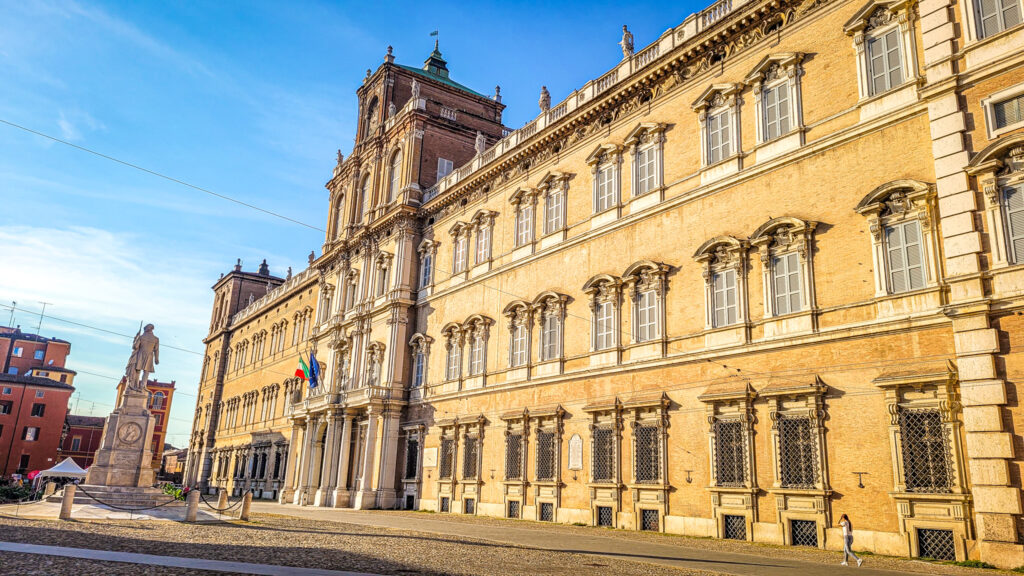
Teatro comunale Luciano Pavarotti
The Teatro Comunale Luciano Pavarotti is a magnificent creation completely finished in the neoclassical style. Built by Architect Marco Zanuso in 1841, it exemplifies modish design and placement. Its imposing neoclassical façade, with its grand entrance, six Ionic columns, and unique rectangular-shaped and imposing dome are some of its main highlights. Upon entering the building, visitors are greeted with lavish interiors that feature sprawling staircases, historic paintings, crystal chandeliers, and gilded gold mirrors, all hallmarks of the grand Italian architectural tradition.
The Teatro Comunale is especially revered for the opera performances it stages. Walking onto the stage of Teatro Comunale might even make you experience a sense of standing where some of Italy’s most celebrated singers performed. The theatre’s rich history ranges from hosting spectacular performances to showcasing world-famous operas and plays. As an Italian cultural monument, it is a historical and grand establishment that continues to be an artistic cornerstone of northern Italy.
The Teatro Comunale is unique in its role as a community theatre, which is not to say it is a small-scale or amateur theatre. It stages some of the most significant and grand performances in all of Europe. The theatre also possesses modern lighting and advanced audiovisual equipment, which give an edge over any other conventional theatre. It keeps the theatre contemporary and maintains the high standard of excellence.
One of the main highlights is a remarkably preserved liberty-style foyer. It was inaugurated on October 12th, 1913, and it has been preserved in its entirety. This includes its adornment of paintings, sculptures, crystal chandeliers, and parallel staircases that lead to the grand hall. Walking through the foyer is like stepping back in time, into the Italian Belle Époque.
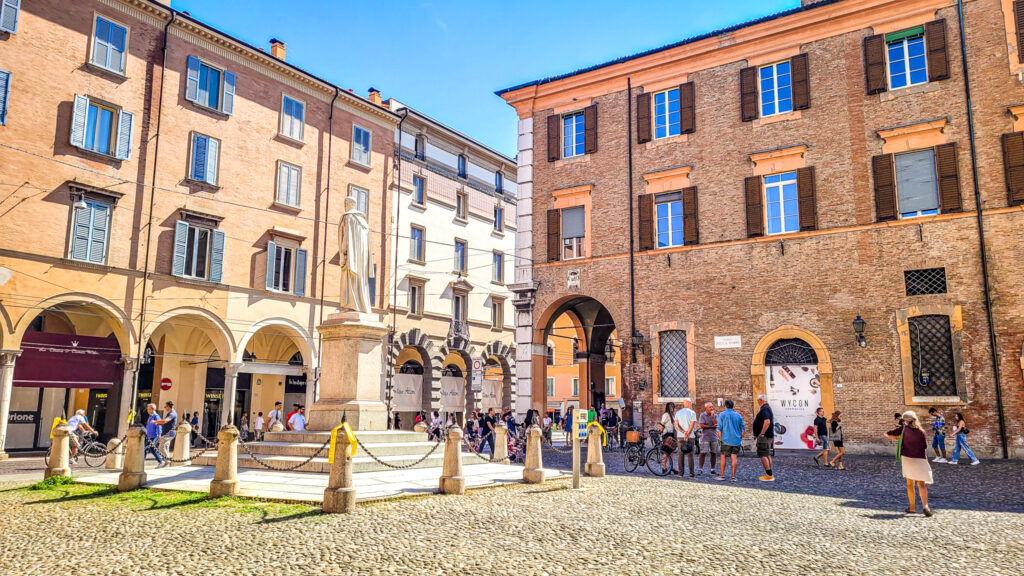
Casa Museo Luciano Pavarotti
Casa Museo Luciano Pavarotti is not located in the city but it’s an amazing monumental highlight to visit when you are a fan. To comprehend the magnitude of Pavarotti’s contribution to the world of music, one must explore Casa Museo Luciano Pavarotti. The tenor purchased the mansion in 1975, which is known as Villa Cialdini, and lived here until his death in 2007. The museum is divided into two parts: the first part exhibits Pavarotti’s music studio, living room, dining room, library, kitchen and bedroom. Each room is decorated elegantly with sumptuous furnishings and artwork, providing visitors with a glimpse into Pavarotti’s life when he wasn’t onstage. In the second part of the museum, visitors can find Pavarotti’s most treasured instruments, recordings, correspondence, photos, and newspaper articles collected throughout his musical career.
Architecture
Apart from the rich artefacts on display, the architecture of the museum is also one of its most striking features. The villa’s architectural style is distinctive to the region and is a beautiful example of the 19th-century landscape that has been preserved through the years. The villa built in a neoclassical style with a beautiful sloping roof, is surrounded by a wide park, a vineyard and beautiful garden with colourful flowers. Visitors can enjoy the picturesque views of the countryside from the verandas of the mansion and admire the grandeur of architectural design that is both regal and extravagant.
Pavarotti’s music studio
One of the highlights of the museum, however, is the grand piano situated in Pavarotti’s music studio. Designed by the famous architect Renzo Piano, the music studio is an incredible collaboration between Piano and Pavarotti, and it still inspires awe and wonder in visitors to this day. The amphitheatre-like structure of the studio with its curved walls produces an exceptional acoustic effect, which made it to be known as one of the best acoustical spaces in the world.
Pavarotti’s library
Besides the music studio, the museum’s library is also a thing of beauty. With floor-to-ceiling bookshelves, carved wooden desks and armchairs, the library showcases Pavarotti’s deep appreciation for literature. This room screams of luxury and elegance, as it reflects Pavarotti’s interest in culture and knowledge that went beyond music.
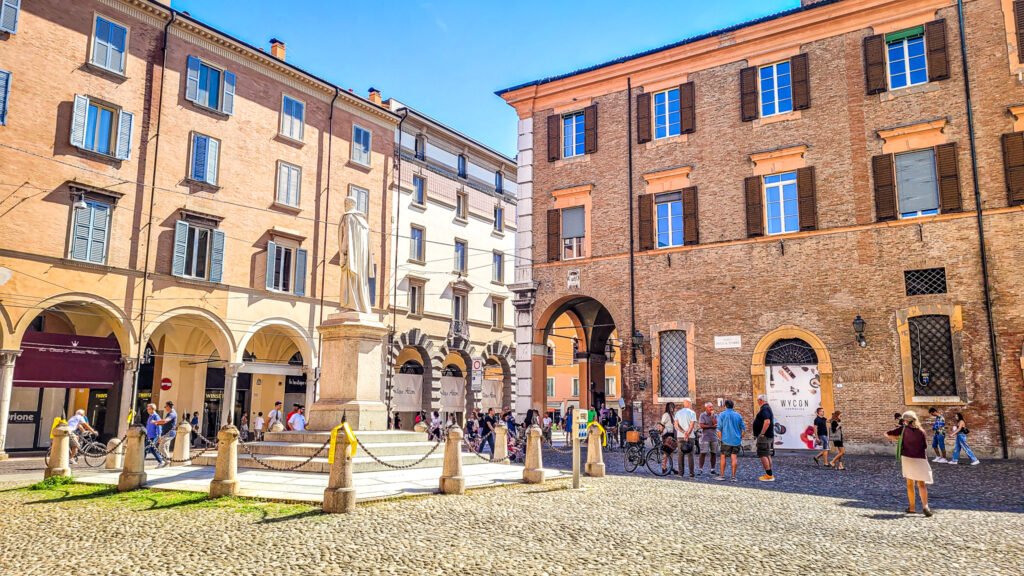
Monumental highlights in Italy
Experience the allure of Italy’s rich historical sites. Explore the best monumental highlights to visit in Bologna. It’s one of Italy’s most underrated cities, no joke! It’s got a crazy long history dating back to the renaissance period, loaded with culture, art, and amazing food. Delight in the flavours of Parma ham in Parma, while appreciating the city’s captivating history and architecture. Marvel at the charming houses along the picturesque Italian Riviera coastline at Cinque de Terre. Explore Florence, the city where Leonardo Da Vinci lived and worked, and make sure to carve out time to visit the Uffizi Gallery, one of the most renowned museums in the world. Exploring Rome presents an incredible chance to delve into the captivating history of the Roman Empire. Don’t miss out on this amazing opportunity when you have some spare time!
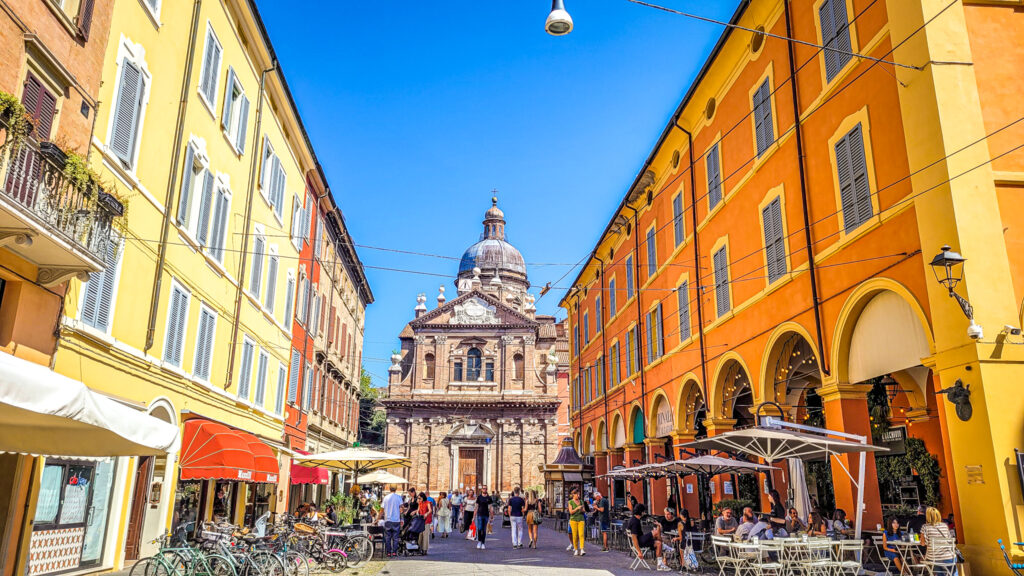
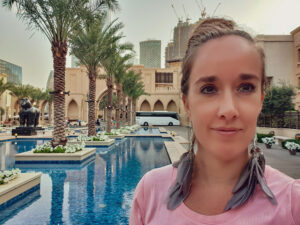
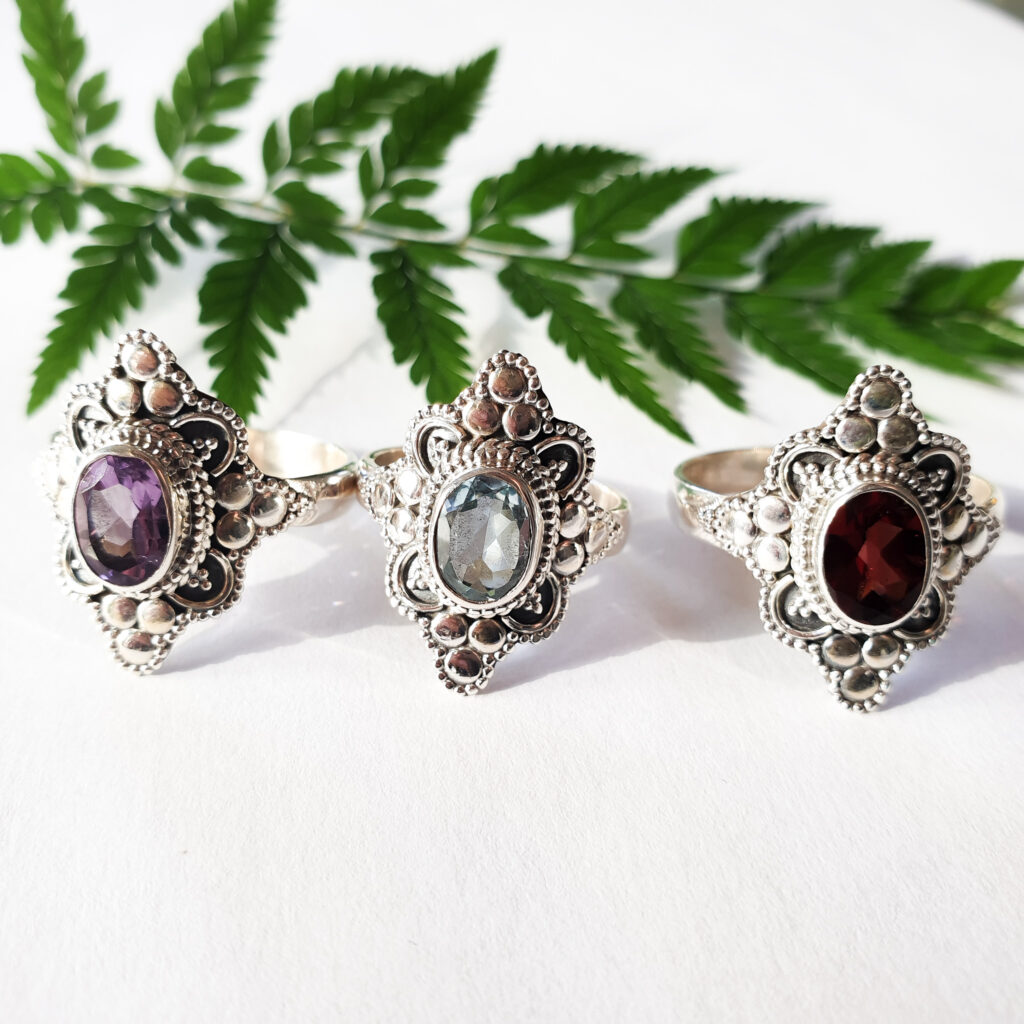
This Post Has 2 Comments
Wauw wat een goed ges hoeven artikel. Je moet een boek gaan schrijven.
Goed geschreven